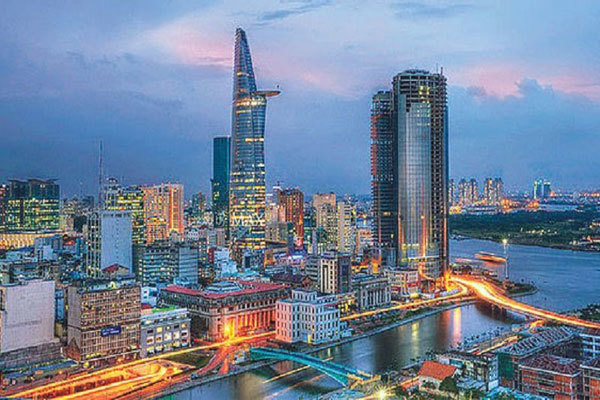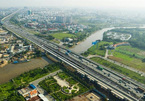Therefore, attracting young and professional manpowers is one of the top priorities to sustain socio-economic development.
Recently, in a meeting with the southern provinces, PM Nguyen Xuan Phuc stated: “Ho Chi Minh City and seven provinces including Ba Ria - Vung Tau, Dong Nai, Binh Duong, Tay Ninh, Binh Phuoc, Tien Giang and Long An will become the new “Diamond Octagon”, bringing prosperity to Vietnam to reach regional level.
 |
| Ho Chi Minh City and seven provinces will become the “diamond octagon” (Photo: Architectural magazine). |
The growth of Ho Chi Minh City is not only driven by big corporations but also hundreds of thousands of small and medium enterprises. This is the goal of the southern industrial belt to become the “leading engine” with dynamics and breakthroughs. With tens of thousands of factories and businesses, mainly domestical ones, the outlying districts of Binh Chanh, Binh Tan and Tan Phu have created strong and sustainable development for the region, connecting the city with the Mekong Delta provinces.
The industries will be interconnected and naturally interwoven on the law of supply and demand to create the harmonious complement. This connection will all come through the key ports located in the southern part of the city as the convergent point for technology transfer, production patterns, supply of resources, logistics and transportation.
Especially, Binh Chanh area, with the development of inter-regional transport infrastructure, logistics center around Tan Kien station, connects the city to the southwestern region via the high-speed train and Metro 3A that are taking shape, alongside important economic key ports. In the near future, there will be thousands of Vietnamese enterprises, factories, and research centers growing with great potential in this place.
The development in the southern industrial belt in general, and Binh Chanh area in particular, will attract large investment capital and high quality human resources to serve operation and development. Trained workers, engineers, technical experts, leaders and supervisors from home and abroad will gather here, helping create a new face for a vibrant economic region, and one of the most innovative areas of the country.
Along with the booming industrial development is the importance of investment in social infrastructure, such as housing for workers, engineers, experts; together with school systems, relaxation, entertainment, shopping, health care, and services facilities for daily life. The synchronous development of social infrastructure in a new economic belt will create big attraction for a strong workforce to enable production, trade and services.
Social housing - a push for the southern industrial belt
Singapore, a country with a narrow and small land bank, has successfully built concentrated housing areas with high density and full of public facilities to meet the needs of the people for living, learning, shopping, and entertaining. The buildings have the advantage of being located along public transport routes which are convenient for traveling.
In Ho Chi Minh City, the demand for affordable housing is very large, but in the 2016-2019 period, only about 14 social housing projects with 10,255 units were put into use, while the real demand was 10 times bigger: about 134,000 units.
It’s understandable to say that affordable social housing is becoming much more “thirsted for” in Ho Chi Minh City, being an important role in promoting regional connectivity, creating a driving force for development of the southern industrial production belts, especially for large production centers such as Binh Tan and Binh Chanh areas.
However, until now, the land bank available in Ho Chi Minh City for social housing is very limited, and there is also difficulty in finding the investors willing to spend a large amount of capital for social infrastructure and synchronous transport infrastructure to build a model social housing area, to meet the need of booming development of Saigon South’s economy. SGT

Social housing development needs the people's strong support
Nguyen Van Sinh, Deputy Minister of Construction, talks to the newspaper Thời báo Kinh Tế Việt Nam (Viet Nam Economic Times) on Vietnam’s goal to invest in the construction of 12.5 million square metres of housing floor space from 2016-2020.

HCM City to develop hi-rises along metro line
HCM City plans to stop construction of high-rise apartment buildings in downtown areas and focus instead on building such residential complexes along the first metro route in the eastern part of the city comprising districts 2, 9 and Thu Duc.